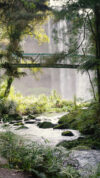Lesen Sie unsere Paper und Poster
Hier können Sie weitere wissenschaftliche Veröffentlichungen herunterladen
Montinaro et al. (2018) Telemetry of sand lizards (Lacerta agilis) in vineyards – Are methods established for terrestrial vertebrate risk assessments effective in recording higher tier data for reptiles?
Habitats bordering vineyards represent primary habitats for reptiles. This taxon can become exposed when foraging between vineyards, where pesticide application is frequent. EFSA (2018) suggests the sand lizard as a focal species to represent other lacertids living in agricultural land.
Sgolastra et al. (2018) Pesticide Exposure Assessment Paradigm for Solitary Bees
Current pesticide risk assessment for bees relies on a single (social) species, the western honey bee, Apis mellifera L. (Hymenoptera: Apidae). However, most of the >20,000 bee species worldwide are solitary.
Vallon et al. (2018) Focal Species Candidates for Pesticide Risk Assessment in European Rice Fields: A Review
An assessment of potential risks of pesticides on wildlife is required during the process of product registration within Europe because of the importance of agricultural landscapes as wildlife habitats. Despite their peculiarity and their specific role as artificial wetlands, rice paddies are to date pooled with cereals in guidance documents on how to conduct risk assessments for birds and mammals in Europe.
Gradish et al. (2018) Comparison of Pesticide Exposure in Honey Bees (Hymenoptera: Apidae) and Bumble Bees (Hymenoptera: Apidae): Implications for Risk Assessments
To date, regulatory pesticide risk assessments have relied on the honey bee (Apis mellifera L.) (Hymenoptera: Apidae) as a surrogate test species for estimating the risk of pesticide exposure to all bee species. However, honey bees and non-Apis bees may differ in their susceptibility and exposure to pesticides.
Alscher, Hecht-Rost, Lückmann (2017) On the way to a new guideline: Results of three years of bumble bee semi-field testing
According to the EFSA Guidance Document on bees (EFSA, 2013), not only honey bees but also bumble bees should be considered in the risk assessment of plant protection products. Up to now, no official guideline for standardised semi-field trials is available to assess effects on bumble bees.
Nikisch, Lutz (2017) EasyGUTS Running R GUTS scripts in a Windows® based software
We developed a Windows® software to manipulate and run R GUTS scripts for the evaluation of surface water exposure profiles calculated with the environmental fate model FOCUS TOXSWA 4.4.3.
Blanckenhagen (2017) Enclosure set up: a well-known system as a new semi-field approach for risk assessment of plant protection products on common voles
Within the EFSA (2009) guided registration of pesticides, the risk assessment for small herbivorous mammals is an all-crop scenario, which often fails to reach the trigger indicating a safe use, even with the higher tier approach. For supporting ‘weight of evidence’ approaches, EFSA (2009) recommends field effect studies or population modelling.
Faupel et al. (2017) Functional endpoints in ecotoxicology: A case study in freshwater indoor microcosms
Little is known about the influence of toxicants on the function of freshwater sediments. To better understand these effects, a microcosm experiment was carried out with Cadmium (Cd) as a model pollutant (50 and 400 mg Cd kg-1 dry sediment).
Laucht et al. (2017) Habitat preferences of linnets (Linaria cannabina) in vineyards
A large part of vineyards in Europe show no or very little ground vegetation, due to chemical and non-chemical weed control. But management techniques have started to change in the last years resulting in a reduction in herbicide applications and in an increase in ground vegetation growth and cover.
Neuwoehner (2017) Chances and Challenges in Regulatory Ecotoxicological Mixture Toxicity Assessment for Plant Protection Products
Lückmann et al. (2017) Fenoxycarb, a suitable reference item in semi-field testing on the solitary bee Osmia bicornis (L., 1758) (Hymenoptera, Megachilidae)?
According to the ‘EFSA Guidance Document on the risk assessment of plant protection on bees’, not only honeybees but also bumble bees and solitary bees have to be considered for the first time. But for testing of solitary bees under laboratory, semi-field and field conditions no official test guideline exists.
Jakoby et al. (2017) Evaluating Ecological Recovery in Mechanistic Effect Models for Environmental Risk Assessment
In environmental risk assessments (ERA) for plant protection products (PPP) one possible protection goal option at the population level is recovery (EFSA, 2016). This recovery option accepts “some population-level effects of a potential stressor if recovery takes place within an accepted time period”.


